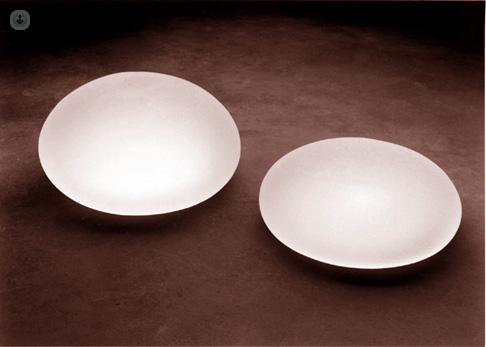Prepectoral breast reconstruction
Mr Deemesh Oudit - Plastic surgery
Created on: 05-14-2020
Updated on: 01-17-2024
Edited by: Kate Forristal
What is prepectoral breast reconstruction?
Breast reconstruction for breast cancer patients can be done using a range of methods. One of them is by using a “prepectoral” prosthesis wrapped in ADM (acellular dermal matrix). It is the newest type of implant-based breast reconstruction method.

In order to have a pre-pectoral breast reconstruction, the patient would require very thick mastectomy skin flaps with a healthy blood supply.
Why is prepectoral reconstruction done?
Through the subpectoral method, breast implants are placed under the chest. During the procedure, some of the chest muscle is cut to place the implant underneath.
With subpectoral implant breast reconstruction, it can sometimes look distorted, this is due to how the implant is below the chest muscle. This can be a problem for women, especially if they use their chest muscles a lot, for example, when doing exercises such as push-ups.
Prepectoral breast reconstruction is often chosen as an alternative to subpectoral reconstruction. It places the implant above the chest muscle just under the mastectomy skin envelope, this way it limits the problems seen with the subpectoral method.
What does prepectoral breast reconstruction involve?
With prepectoral implants, either direct-to-implant or with a tissue expander, the implant is placed above the muscle.
Since there is no muscle coverage to protect the implant, the implant is wrapped in an acellular dermal matrix (ADM). ADM is made from the collagen layer of donated human skin and helps create an internal flexible but supportive structure to hold the implant in place. Then, skin from the area underneath the breast, where the breast meets the chest (the “inframammary fold”), is used to cover the implant.
How do you prepare for the surgery?
The determination as to whether this is the best option would be made at the time of the consultation with a specialist.
Women who benefit from this procedure are usually those who have small to medium sized breasts that do not sag very much. Additionally, breast cancer cannot have been located in the nipple area, as for this surgery, it must be left intact.
Aftercare
After surgery, patients can expect some swelling, soreness and bruising for 2 to 3 weeks. The plastic surgeon will advise you about bathing, showering and wound care.
Most women return to normal activities within 6 to 8 weeks after the surgery. It may be several weeks before you can do strenuous exercise.
Pain from surgery is usually temporary. It can often be treated with mild pain relievers such as ibuprofen, naproxen or acetaminophen. You would have to make sure to consult with your doctor before taking them.
You'll be asked to return for regular checkups at first and are likely to be asked to do self-exams of your breasts every month and have an annual mammogram. Remember, implants typically last at least 10 years, but will most likely need to be replaced during a patients’ lifetime (replacement requires surgery).
Medications for severe pain from surgery
For more severe pain, your doctor may prescribe tapentadol, tramadol, or opioids (such as oxycodone or hydrocodone).
Alternatives to prepectoral implants
The more common methods used for breast reconstruction include “subpectoral” and “dual-plane” approaches.
